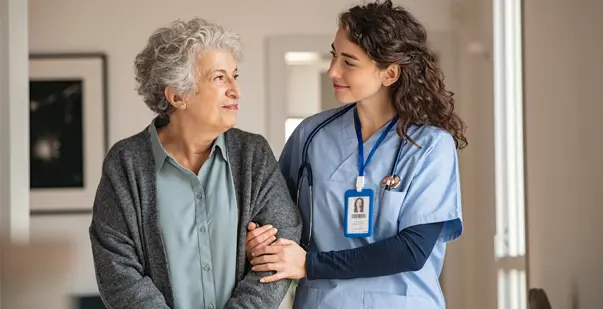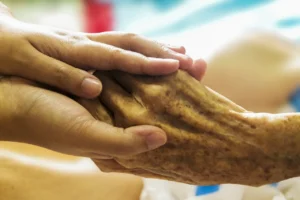
Last Updated On: August 30, 2024
It’s not easy caring for stroke patients recovering at home. It needs extreme amounts of tolerance, cognizance, and compassion. It’s essential to first understand the needs and conditions of a stroke patient to know how to care for them properly. Their healthcare practitioner will let you know about this before they are discharged from the hospital. They will also provide you with a detailed care plan to help them recover. Remember that the level of care will change depending on how much the stroke has damaged you. In this article, we will discuss how you can help a stroke patient’s speedy recovery.

After a stroke, the patient can make significant progress in regaining their independence. However, some problems might persist:
It is normal for many stroke patients to have mobility problems. With daily movement and exercise, this can progressively improve. Even a simple exercise like walking every day is useful to them. This will help to restore muscle memory and increase motor skills. Besides Brain Exercises for Stroke Recovery advised by the doctors, daily walks are highly beneficial.
Stroke survivors have an increased risk of suffering from another stroke. To reduce this danger, make sure your loved one eats a good and wholesome diet. A diet that contains the proper balance of vitamins and nutrients can help in recovering their health at its best.
Medication should be taken exactly as suggested by their doctor. We recommend making a timetable to help them remember what they need to take and when they need to take it.
Stroke sufferers must be closely watched by their healthcare professionals. Always make the time to see their doctor frequently.
Depression is frequent in stroke victims. It might impede their capacity to recover. Focus on pleasant memories with them. Get them outside as much as possible. Speak with a healthcare expert to build a plan of action if necessary.
The side effects of stroke improve after being discharged from the hospital or clinic. However, new side effects can appear later too. If you observe anything out of the ordinary or strange, contact their doctor or neurologist without delay.
Stroke patients may find it difficult to balance and can fall. Falls should be taken extremely seriously. If a stroke patient falls, seek medical treatment. You should also consider home modifications for stroke patients such as non-slip mats.
Stroke patients must do things on their own to recover. Don’t jeopardize their recuperation by being overbearing.
Keep the patient’s medical history well organized. Try to keep all paperwork in one location for easy access.
Social workers and case managers are an important part of the recovery team while the patient is recovering from a stroke. Don’t shy away from asking them any questions if you are facing difficulty in understanding any part of home care.
If you’ve had a stroke, you’re at a significant risk of having another one. One in every four stroke survivors experiences another stroke within five years. That is why treating the underlying causes of stroke, such as heart disease, high blood pressure, atrial fibrillation (rapid, irregular heartbeat), high cholesterol, and diabetes, is critical. The doctor may prescribe drugs or advise to alter diet, exercise, or adopt other healthy living choices. In some circumstances, they also suggest surgery.
CPR is a critical life-saving technique that can be used to help people whose breathing and heartbeat have ceased. In case someone who has suffered a stroke is not breathing, practicing CPR until emergency services arrive may save their life.
People who have not received training in CPR can learn from the American CPR Care Association. Our CPR courses are 100% online and can be done at your pace. All you must do is select the course, pass it online and print your certification.
People who have received training can deliver high-quality chest compressions and rescue breaths at a rate of 2 breaths every 30 compressions. Do only compressions if there are no mouthguards. You should also check the heart rate and deliver an electric shock to the chest through AED.
Caring for stroke patients at home can have a big impact on them and their recovery. Provide additional care and love to keep them motivated and their spirits uplifted. A CPR course will keep you prepared to handle emergencies. Explore our website or get in touch with us for more information.